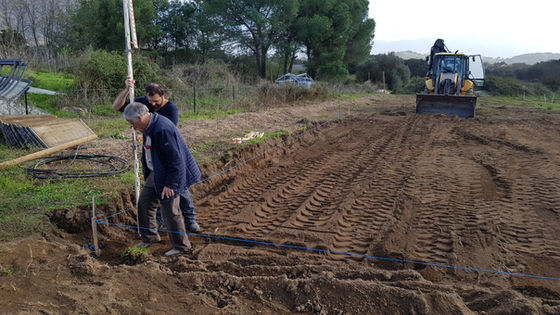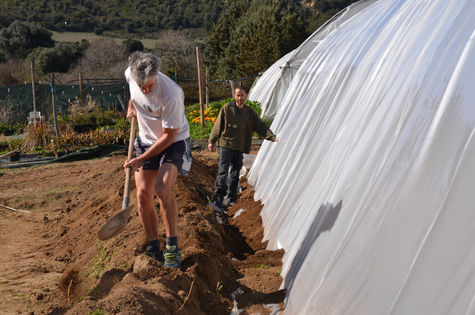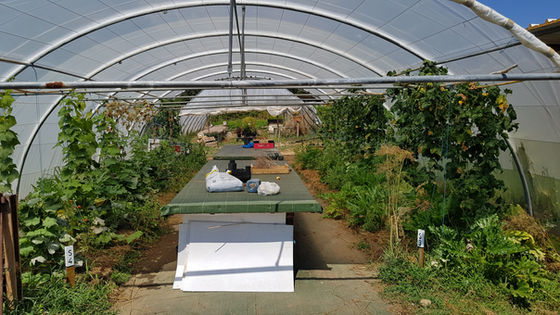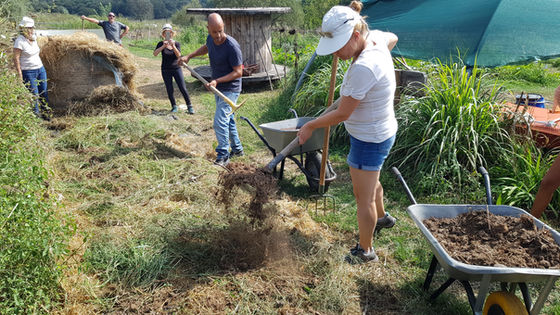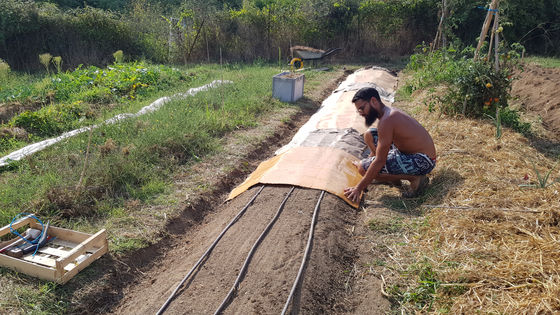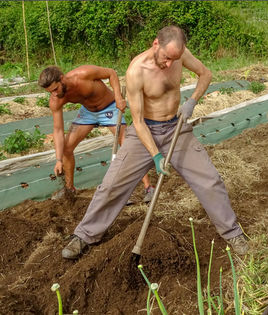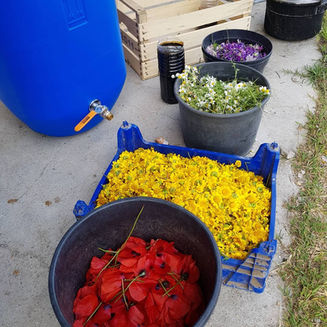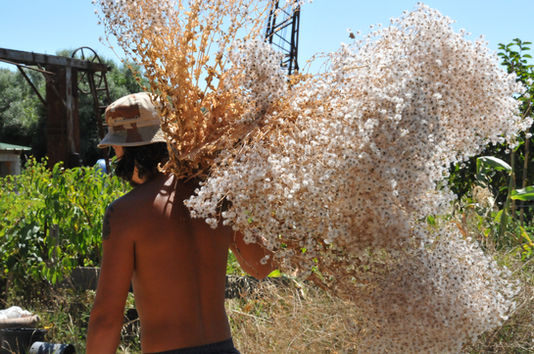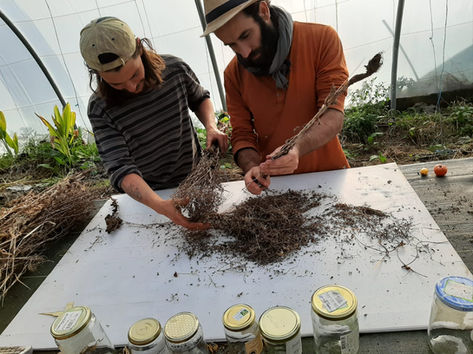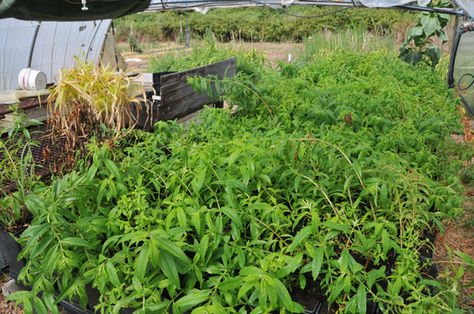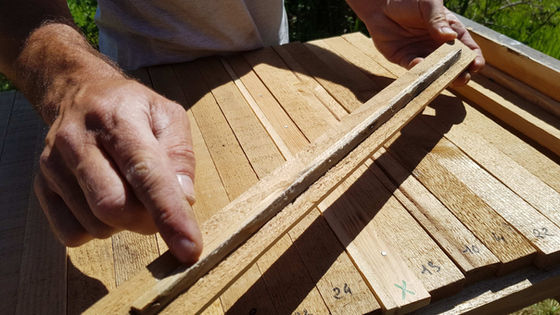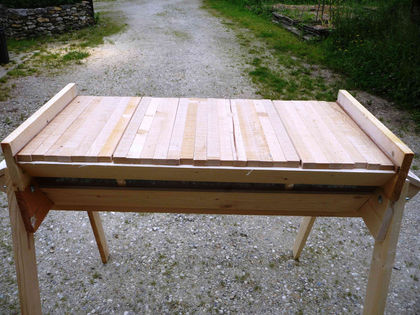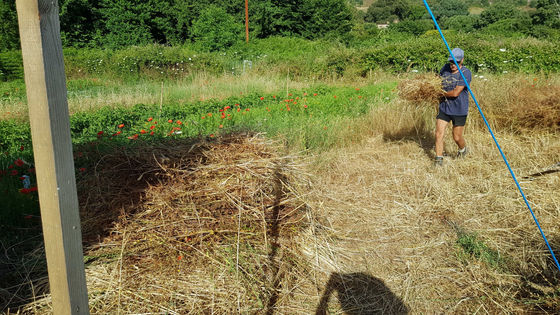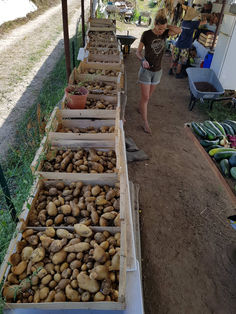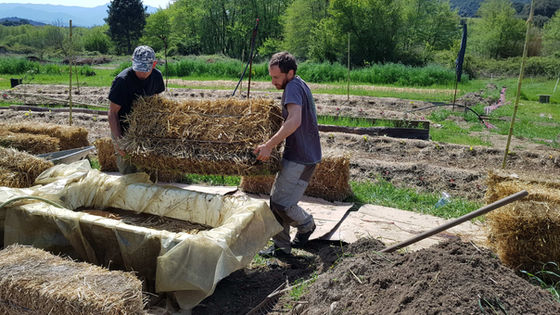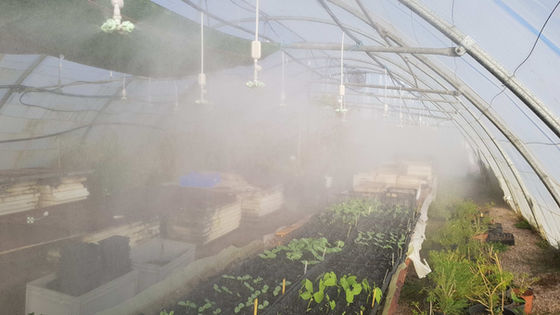
PILOT SITE FOR SUSTAINABLE DEVELOPMENT, REGENERATIVE AGRICULTURE AND FOOD AUTONOMY
"Listin'Core" Food transition tool
Create learning tools adapted to the ecological and social challenges of the 21st century.
-
Design and construction of a training center to develop food self-sufficiency in regions, reduce and recycle waste.
-
Completed in 6 months, it made it possible to produce vegetables for the local network , nurseries, kindergartens, restaurants, neighborhood grocery stores.
In addition to this, you need to know more about it.
-
Objective of the place: Experiment, produce by federating networks of alternative practices in Permaculture, Agroecology and Agroforestry. Ensure the transmission of knowledge for the purpose of food autonomy.
-
Trainee training AFPR, BPREA, BPJEPPS.


The ingredients of the project
The different stages of the "Design and production" project:
Design, information gathering, planning.
Launch of operations, topography,
green manure cycles.Installation of cultures.
Setting up of the different activity sectors of the place: the technical room, the agora (place of outdoor lessons), the composting area, the nursery, the greenhouses for seedlings and food production.
Launch of training courses.
Experimental crops: lasagna mounds, mountain mounds, crops under straw, in the ground, under green manure and soil-less.
General maintenance and harvests.
Objectif :
-
Accompagnement au diplôme BPERA
-
Installer une agricultrice dans le réseau Locale

General informations
Site: 13 ha under "Ecocert" (for over 30 years).
Pilot center: 6500 m².
Access to drilling water at 30m.
Market gardening: 1200m² (net area) in "Nature and Progress".
Orchard: 4 ha (avocados and various citrus fruits).
Partner: Francophone University of Food Autonomy , Hotel Monte-d'Oro , Cabinet Amic.
-
Suivre les aventures de Laora Sicurani et l'évolution du jardin de production alimentaire en Corse
The project in pictures
DESIGN
Planning your project
Design is the feasibility study of a project taking into account the resources of the place, your available time, your budget and your goals.
The realization is done in stages according to the means implemented and the season of installation.
The design includes plans , budgeting , the various stages of implementation and their schedules.
THE GARDEN, 6 MONTHS LATER
Create a production space in 5 months
Start from a meadow filled with quackgrass, recycle orchard pruning, recycle the soil from ponds taking up space, launch a food production garden for educational and productive purposes in a few months.
TOPOGRAPHY
Anti-erosion system - Implantation techniques
To materialize the plan on the area, we only need wooden stakes, a hammer, string, a decameter, an Egyptian level or a laser level.
The installation of cultivation beds on level lines makes it possible to capture water by stopping runoff.
ESTABLISHMENT OF GREEN FERTILIZERS
The green manure workshop
Prepare the area (the density of seeds in the field will depend on the needs per m²).
Sow seeds carefully, check the density per m².
Cover using hand or power tools to protect against birds and ants.
ESTABLISHMENT OF AGROFORESTRY IN VEGETABLES
Agroforestry
The quantity of trees planted in a market gardening system must be adapted to the surface of the latter. They will create shade in the warmer months and be pruned in winter to let in light. The tree is a perennial, the vegetable is an annual or biennial, each system hosts a different microbiology, and together they will create a balance. Ex: fruit trees, aromatics, berries, creepers.
GREENHOUSE ASSEMBLY
The greenhouse, cultivation under cover
A greenhouse is intended to protect non-hardy plants (frost) and to promote the growth of crops (vegetables, flowers, etc.) by creating climatic conditions that are more favorable than the local climate. She permits in addition, "out of season" crops.
COMPOSTING
Recycle organic matter, create fertility
Compost is a type of excellent quality potting soil produced by the biological decomposition of organic matter in the presence of air. This amendment has a high content of nutrients.
Compost promotes plant and root growth as well as soil life.
FULL-GROUND GARDEN
Simply cultivate
Growing in the ground, that is to say on a substrate forming an integral part of a non-artificial soil, is a simple solution to implement provided that the condition of the soil allows it (non-existent pollution).
The experimental garden
Description
Test areas on the different permaculture and agroecology techniques will be set up , we will practice the following cultivation methods:
On mounds and mounds
Under straw
Aboveground
Under green manure
In greenhouses
ON MOUNTAIN STOPS AND STOPS
Cultivate with pruning waste and other organic matter
The choice of mound crops was determined by the available stock of a large quantity of wood coming from the sizes of the orchards of the property on 3 ha.
Heaps of earth of several m³ from two basins as well as horse manure, were used as a mixture to cover our woods.
The technique of cardboard on the ground, for the assembly of materials, was favored given the context (quackgrass) and the importance of not putting the wood in anaerobic to avoid blocking too much decomposition.
UNDER STRAW
Straw and hay blanket
The Straw cultivation is quick to install, on the other hand it requires a lot of quality raw material (untreated and not filled with weed seeds).
The advantage of this culture is the non-tillage and the speed of transformation to recreate an atmosphere favorable to its fauna and microbiology.
UNDER KRAFT PAPER
Raw paper cover
Effective from three superimposed layers.
Lasts about 6 months or more depending on the rains.
IN BOX
The box
Take raw cardboard devoid of ink and tape.
Wet them so that it hugs the ground.
Drill, for planting, with a cutter or a dibble.
UNDER GREEN FERTILIZERS
Cultivation with plants as a soil preparation
Green manures restructure the soil, provide root and external bio mass , nourish and promote the reception of soil fauna and auxiliaries.
Sow the seeds, water, let it grow, prune and it's ready!
CANVAS COVER AND STARCH BASE
Fight against weeds
Culture under tarpaulins is more intended for professionals with large areas to occupy. This choice is determined by the weeding time which can mobilize up to 50% of the working time.
At the start of the project, they can be used to control unwanted weeds and seeds present.
Opening of the ground with the grelinette or the hoe.
Weeding of quackgrass rhizomes and other rumex, bindweed, etc ...
Amendment in organic matter (composts, leaves, clippings, bark ...).
Covering, planting.
UNDER TILES
Ground cover with recovery
Earthen tiles are great for covering the ground.
They slow down the growth of weeds.
They retain moisture.
Auxiliary fauna likes to find refuge there.
Maybe a bit long to install it.
IN CARDBOARD AND CRUSH
Pruning waste and raw cardboard recycling
In urban, forest and rural areas, the pruning of plants often intervenes twice a year, this material often recovered by the waste reception centers should take the path of the fields and participate in the amendment of all collective or private gardens.
THE LABORATORY, FERMENTATION EXTRACT
Manufacture of Biofertilizers
This method is particularly interesting because the fermentation takes place without oxygen. The fermented extract produced anaerobically produces a fermentation similar to that of beer or wine and will give a liquid "acid-reduced" . This fermented extract will be much more beneficial to the plant than a manure produced aerobically called "alkaline-oxidized" . The latter method produces an oxidized liquid which is putrefied.
This oxidation, which keeps the nutritive side, will however be less beneficial for the plant, and can attract pathogens .
SEED PRODUCTION
Planning your project
Adapting its seeds, to its soil, its climate, its diseases, is one of the keys to the resilience of the territories.
To do this, it is important to follow a very precise and to have a plot devoted solely to the reproduction of these seeds.
NURSERY
Produce your plants, create an ancillary economy
Opening a nursery space makes it possible to produce interesting plants for its land, the local network and opens up possible additional income.
HIVE
Beehives in the garden
Having a few beehives in your garden is the guarantee of a beautiful pollination of your flowering fruits and vegetables but also the pleasure of producing your own honey and why not its pollen.
CEREAL PRODUCTION TEST
Produce your grain, your flour to bread
Joël takes us from seed to bread ...
Sowing of seeds of various cereals.
Harvest, passage to the flour mill.
Manufacture of a traditional oven.
Collective batch every Wednesday!
TURNING COURSE FOR THE HENS IN THE GARDEN
Pasture rotating across a garden
Rotary grazing combines the production of eggs with animal welfare . The chickens make a very interesting weeding, sanitation and amendment work!
Weeding of paths and beds of culture between each rotation of vegetables.
Amendment in nitrogen which can be assimilated by their excreta.
Helps in the elimination of fruit pests, protocol is necessary over several years before finding a balance and healthy fruit trees.
TECHNICAL AREA
Organize your tools, equipment
Manufacture only with recovered materials .
The room must be functional and suitable for operation.
ABOVE-GROUND CULTURE
Growing on areas without soil
Soil-less cultivation is intended for urban spaces and is a solution to polluted or non-fertile soils.
SEEDLING
Start seedlings, prepare for the season
Preparing your seedlings means choosing the right seeds at the right time.
It is essential to launch your garden.
Prepare its substrate and trays.
Adapt the size of its pots and trays to the types of seeds and the time spent in the greenhouse.
Sow its seeds.
Support emergence by managing humidity throughout the process
THE PELVIS
Aquatic ecosystem
Creating a reception area for the auxiliaries, the insect bar , is an important element in the balance of a vegetable production garden.
AGORA
Place of sharing and meeting
Having a reception area for all audiences, at the heart of its project, it opens up to training and citizen exchanges towards the resilience and food autonomy of the territories.
Do you want to carry out this type of project?
From training are available :
Anti erosion system training
Food production training



.png)








































































